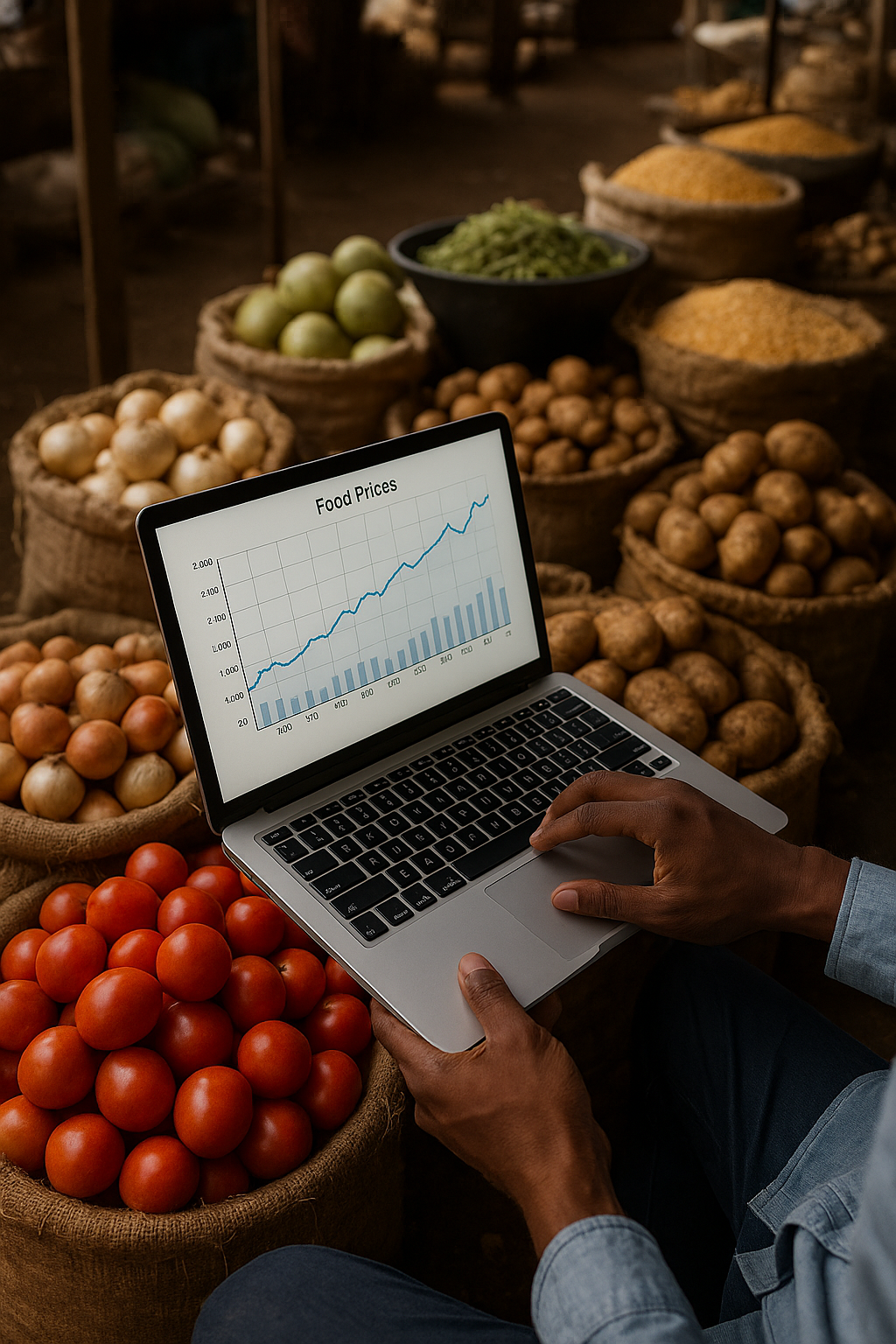New AI forecasting model promises greater stability for Kenya’s volatile food prices
Kenya’s food markets are known for extreme volatility influenced by weather shocks, inflation, currency fluctuations, and logistical barriers. Previous statistical models struggled to capture this complexity due to non-linear relationships in the data. The authors set out to test whether machine learning could fill that gap.

- Country:
- Kenya
A team of Kenyan researchers has developed an artificial intelligence–based hybrid model capable of predicting food prices with unprecedented accuracy, offering a new data-driven tool to support food security policy in the country. Their work, published in Frontiers in Artificial Intelligence under the title "Predicting Food Prices in Kenya Using Machine Learning: A Hybrid Model Approach with XGBoost and Gradient Boosting," introduces a stacked learning framework that significantly improves forecast reliability across diverse commodities and regions.
The study draws from a comprehensive dataset covering nearly two decades of market information. It integrates macroeconomic indicators, agricultural variables, and spatial data to forecast price movements in Kenya's food markets. The findings highlight how combining multiple machine learning models can outperform conventional single-algorithm systems and help address one of Kenya's most pressing challenges, unstable food prices that endanger vulnerable populations.
The search for a more reliable price forecasting system
Kenya's food markets are known for extreme volatility influenced by weather shocks, inflation, currency fluctuations, and logistical barriers. Previous statistical models struggled to capture this complexity due to non-linear relationships in the data. The authors set out to test whether machine learning could fill that gap.
Using historical data from the World Food Programme, Central Bank of Kenya, and International Monetary Fund, the researchers compiled price records from January 2006 to September 2024. They cleaned and standardized the data, transforming it to remove outliers and normalize skewed values. Key predictors included commodity type, price category, unit quantity, exchange rates, inflation trends, and county-level identifiers.
To model these relationships, they tested a range of algorithms, decision tree, random forest, LightGBM, gradient boosting, XGBoost, and linear regression, before constructing a hybrid stacking ensemble that merged the strengths of gradient boosting and XGBoost. The final model used linear regression as a meta-learner to balance the predictions from both base models, refining the results into a single high-precision output.
Model training and evaluation followed rigorous procedures. The data was split 80–20 between training and testing, with five-fold cross-validation ensuring consistency. Randomized hyperparameter tuning further optimized each model's performance. Forecast quality was validated using the Diebold–Mariano test to statistically compare the predictive power of competing models.
The hybrid system achieved a coefficient of determination (R²) of 0.9940, demonstrating an almost perfect fit between predicted and actual prices. Mean absolute error and root mean square error values were the lowest among all models tested, proving the hybrid's ability to capture market dynamics more effectively than traditional approaches.
Inside the hybrid model's success
The study attributes the model's superior accuracy to its ability to manage non-linearity and variable interactions through ensemble learning. XGBoost contributes fast and robust handling of large data, while gradient boosting fine-tunes residual errors iteratively, improving precision. The stacking mechanism then synthesizes these independent predictions into one cohesive output, eliminating model bias.
Feature importance analysis revealed that unit quantity and price type were the most influential factors affecting price prediction. Other key drivers included commodity category, currency, and exchange rate, which collectively define Kenya's market sensitivity to external shocks. Spatial indicators such as county also contributed, though to a lesser degree, implying that while location matters, macroeconomic trends have greater influence over price volatility.
The results suggest that hybrid models are not only more accurate but also more stable across datasets and time horizons. The researchers emphasize that this robustness is critical for policymakers and market analysts who rely on consistent forecasts to guide decisions on subsidies, imports, and emergency food reserves.
However, the paper also identifies limits to the system's precision. Some commodity categories exhibited higher residual errors, meaning their price swings were more unpredictable. Seasonal factors, sudden weather events, and external policy changes continue to challenge even the most advanced algorithms. The authors recommend expanding future datasets to include socioeconomic and climate variables to enhance adaptability.
Real-world application and policy relevance
Besides technical success, the researchers aimed to translate their model into a practical decision-support tool. They packaged the trained hybrid system into a Django-based web application, enabling users, from government agencies to farmers and traders, to input relevant market features and instantly obtain price forecasts. The platform provides results both on-screen and through email notifications, offering accessible insights for day-to-day planning and policy interventions.
This innovation marks a significant step toward data democratization in Kenya's agricultural sector. By making AI-driven analytics available to a broader audience, the model has the potential to reduce information asymmetry, empower local producers, and support timely market interventions. It also strengthens Kenya's ability to forecast and respond to price spikes that often trigger food insecurity, especially among low-income households.
From an ethical and governance perspective, the researchers highlight the need to use such predictive systems responsibly. Misinterpretation of forecasts or speculative misuse could distort market signals. Hence, the team advocates for clear communication of model limitations and transparent reporting of uncertainty intervals in practical deployment.
The study outlines several research priorities for the future. These include integrating real-time data streams, refining the model to detect seasonal effects, and enhancing scalability to include regional markets across East Africa. The authors also call for partnerships between data scientists, economists, and policymakers to establish a sustainable framework for AI-based price intelligence systems.
The findings not only demonstrate the power of machine learning in addressing economic challenges but also underscore Kenya's growing contribution to AI innovation in Africa.
- FIRST PUBLISHED IN:
- Devdiscourse









